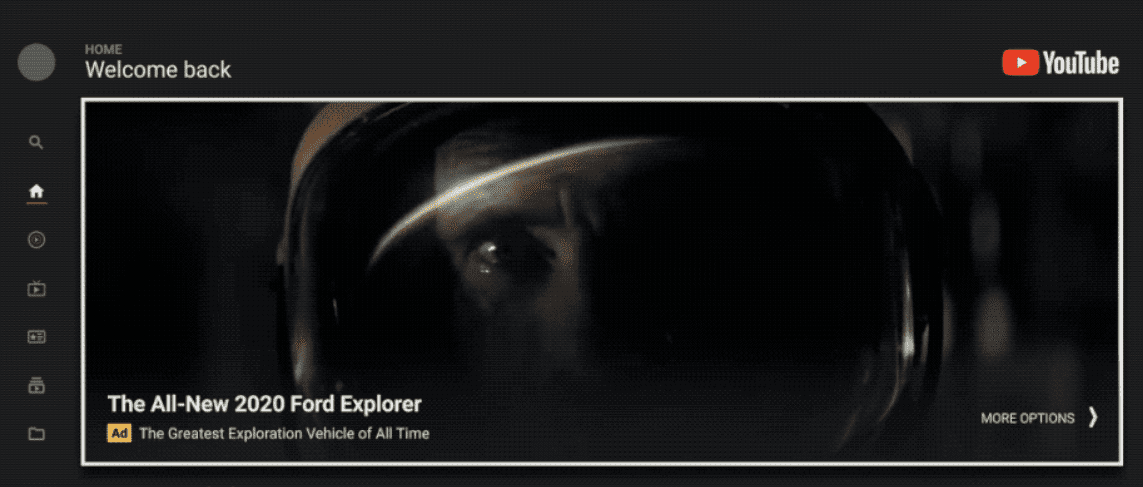We’ve blogged about the fact that in an era of connected TV, audiences are increasingly watching content that advertisers can’t sponsor — there are no ads on Netflix (yet), for example. But Google is sensing and responding to this reality, as evidenced by the launch of the YouTube Masthead ad format for TV. Essentially, YouTube is helping brands find a new way to get onto TV screens — and into the hearts and minds of viewers.
What Is YouTube Masthead for TV?
YouTube Masthead formatted for television is a response to changing viewing habits. Audiences can access YouTube on their TV screens, and because YouTube is free, it represents a new frontier for brand advertising. As described in Instapage, “[a] YouTube Masthead is a digital billboard placed on YouTube’s homepage for 24 hours, reaching roughly 60 million people (YouTube receives 1.8 billion users/month).”
The YouTube Masthead doesn’t use search histories to earmark users based on their interests or demographics (note that you can target a country where you would like an ad to be shown, though). The Masthead simply appears right on the network’s homepage, allowing brands to reach consumers as soon as they access the YouTube app on their TV. The Masthead, which takes up some prominent real estate at the top of the screen, best serves brands that have the desire, and the budget, to maximize exposure across a sweeping, non-targeted audience. On its blog, YouTube provides an example from an early tester, Ford.
Why YouTube Masthead?
In adapting the YouTube Masthead ad format for TV, Google is capitalizing on the fact that while consumers may have cut the cord on linear TV, they are still using their televisions to experience streaming platforms like YouTube. According to the Google blog, “daily [television] watch time tops 250 million hours per day.” TV screens are still a powerful place where brands can enjoy maximum exposure.
And YouTube Masthead ads seemingly deliver. According to Instapage, Google and Compete researched the impact of YouTube homepage ads. Their findings demonstrated that users “exposed to a YouTube Masthead were four times more likely to visit the advertiser’s website, search for their brand, or engage with even more of their videos.” And because YouTube’s content is so diverse (everything from baking tutorials to the Coachella music festival streamed live) the consumer base will be large and diverse, as well.
How to Move Forward with Masthead
Given the broad reach of the YouTube Masthead format, advertisers will want to keep a few things in mind before diving in:
- Even though Masthead ads are not targeted, it’s important to remember who is drawn to YouTube in the first place. Know the platform: what videos are trending, for example. Remember that YouTube has a strong focus on entertainment. Is your product a good fit for the typical YouTube consumer?
- Avoid inside jokes for a specific group. You don’t want your ad to be so broad that it’s boring, of course, but keep it accessible to the large audience you’ll be reaching.
- You want to stir curiosity with your ad. But remember, given the wide-ranging audience, not all viewers will be inclined to buy. Learn about the features YouTube Masthead makes available — from videos to social shares — and offer consumers different ways to explore your brand, depending on their level of interest or engagement.
Contact True Interactive
Curious as to whether YouTube Masthead is a good fit for your brand? Wondering if there are other ways you can leverage television viewership in this era of connected TV? Contact us. We can help.
